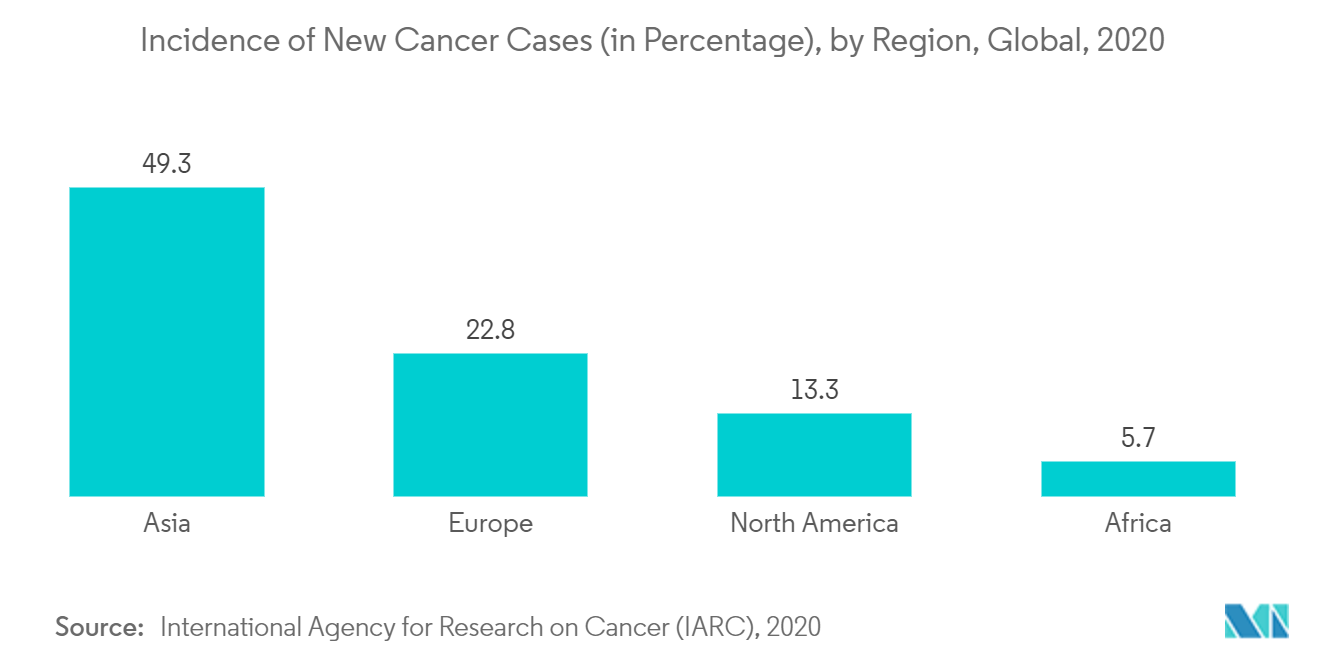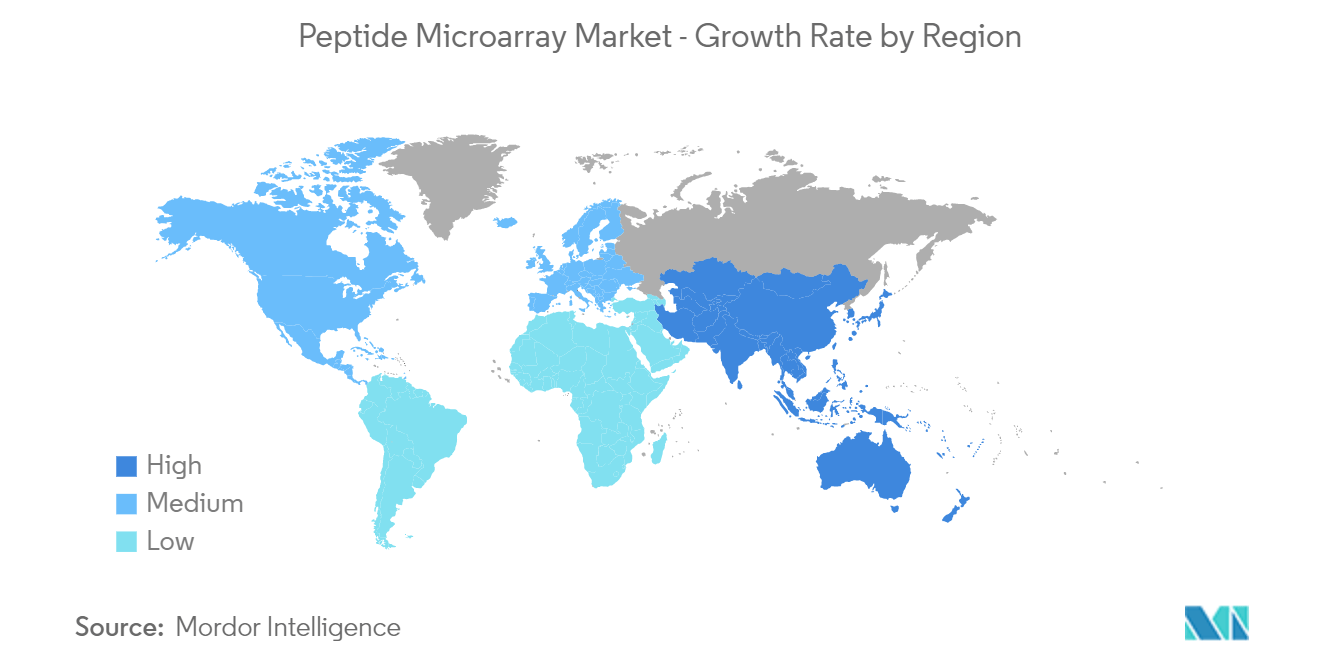Market Trends of Global Peptide Microarray Industry
This section covers the major market trends shaping the Peptide Microarray Market according to our research experts:
The Instrument Segment is Expected to Hold a Major Market Share in the Peptide Microarray Market
The instrument segment is expected to witness good growth in the market and is anticipated to show a similar trend over the forecast period, owing to technologically advanced peptide microarray products and various types of research in chronic disorders, such as cancer, autoimmune and infectious disease. For instance, PEPperPRIINT offers PEPperCHIP Standard Peptide Microarrays, which cover epitopes, antigens, and viral proteomics, and is widely used in various types of research (allergen, cancer, and signature discovery). Moreover, these are also used for antibody epitope mapping, biomarker discovery, immune monitoring, detection, and validation for protein interaction. For instance, JPT Peptide Technologies has a product PepStar Peptide Microarrays, which helps in enzyme profiling and identifies a substrate for orphan enzymes. The research and development of peptide products are increasing as they are cost-effective, efficient, and have lower toxicity. In September 2021, Nimble Therapeutics, a biotechnology company involved in the discovery and development of peptide therapeutics, reported that their strategic research collaboration with Incyte has been expanded to include the discovery of additional novel peptide therapies. Similarly, in November 2020, PEPperPRINT announced a partnership with Lucerna-Chem. Under a new distribution agreement, customers in Switzerland can now additionally avail of PEPperCHIP Peptide Microarray products and PEPperMAP Services through Lucerna-Chem. Thus, such agreements are expected to increase market growth by providing advance instruments in the region.
Thus, the abovementioned factors are expected to increase the market growth.

North America is Expected to Hold a Significant Share in the Market and Expected to do the Same in the Forecast Period
North America is expected to dominate the global peptide microarray market due to the increasing healthcare expenditure and the presence of a well-developed healthcare infrastructure. The growing chronic disease complexities are expected to enhance the demand for early diagnosis of the disease in hospitals, thereby increasing the use of diagnostic capabilities, which is expected to boost the usage of peptide microarrays. According to Globocan 2020, the estimated incidence of new cancer cases was 2,281,658, and the number of deaths was 612,390 due to cancer in 2020 in the United States. The most common cancers in the United States were breast, lung, prostate, and colon (101,809). The high cancer burden will surge the demand for peptide microarray. Moreover, rising molecular-based diagnostic techniques and increasing awareness among the population are also fueling the growth of the overall regional market. For instance, in June 2021, Nimble Therapeutics and RayzeBio reported that the companies entered a strategic collaboration to discover and develop novel peptide-based radiopharmaceuticals for the treatment of cancer. Similarly, in May 2021, Cipla stated the United States launch line-up in fiscal 2023, which analysts anticipate could include generic versions of Advair, Revlimid, and Abraxane. Partnered injectable peptide filings also bolster pipeline opportunities. Thus, such an increasing product pipeline in the region is expected to increase market growth.
Thus, the abovementioned factors are expected to increase the market growth.

